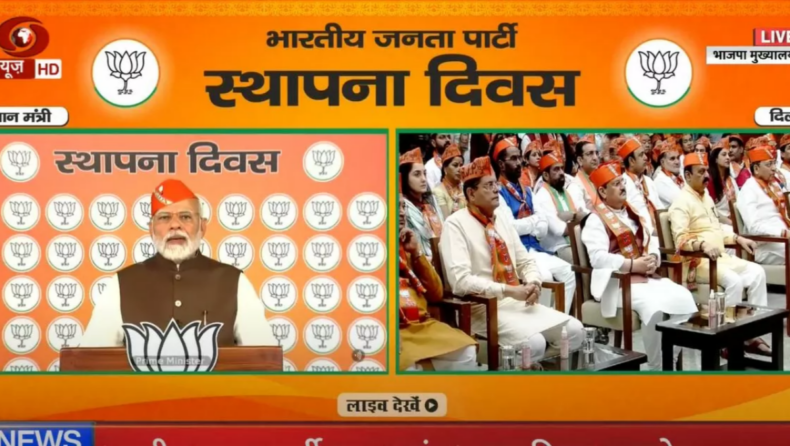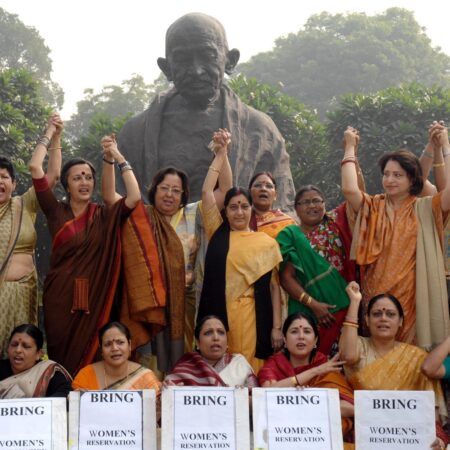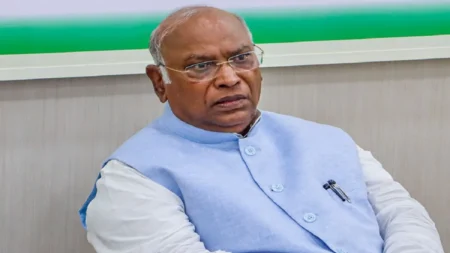- Prime Minister Narendra Modi on Wednesday on the occasion of the 42nd foundation day of the Bharatiya Janata Party (BJP), said that in a time when the entire world is divided into two rival factions, India maintains its interests while being recognized as a nation that can strongly talk about humanity.
- On the 42nd anniversary of the Bharatiya Janata Party’s establishment, Prime Minister Narendra Modi said there are two types of politics in the country (BJP). In the virtual speech, he stated, “One stands for ‘Parivar bhakti’ (family dynasty) and the other stands for ‘Rashtra bhakti’ (patriotism).”
- PM Modi pointed out that the BJP’s foundation anniversary falls at a time when the party is still in power in four states. It also comes three decades after the BJP became the first party in the Rajya Sabha to have 100 members.
- During the speech, he also said, “Today on BJP’s 42nd foundation day, we also have to remember those people who first walked with ‘Oil Lamp’ from the Jana Sangha era and then with ‘Lotus’. Three-four generations gave themselves to the cause of making the party glorious.”
- PM Modi further emphasised that each and every member of the party represents the country’s hopes and dreams.
- He further claimed that the BJP is reaffirming its commitment to ‘Ek Bharat, Shrestha Bharat’ from Kashmir to Kanyakumari and Kutch to Kohima.
History of BJP over the years
- The Bharatiya Jana Sangh (BJS) was the BJP’s previous incarnation, founded by Syama Prasad Mookherjee in 1951.
- In 1977, the BJS united with numerous other organisations to establish the Janata Party. The Janata Party’s National Executive Council forbade its members from holding dual membership in the party and the Rashtriya Swayam Sewak Sangh in 1980. (RSS).
- As a result, former Jana Sangh members broke away from the party and founded the BJP on April 6, 1980.
- Under the leadership of Vajpayee, Lal Krishan Advani, and Murali Manohar Joshi, the BJS was restructured as the BJP.
- The BJP promoted Hindutva (“Hindu-ness”), a philosophy that aimed to define Indian culture in terms of Hindu values, and it was contemptuous of the Indian National Congress’s secular policies and practises (Congress Party).
- After winning the most seats in the Lok Sabha in the 1996 elections, India’s president invited the BJP to form a government. However, it only lasted a few months in government since it couldn’t assemble the 545-member lower house’s needed majority to rule.
- With Vajpayee as Prime Minister, the BJP and its partners were able to build a majority government in 1998.
- Nuclear weapons tests ordered by Vajpayee in May of that year received massive worldwide censure.
- After the All-India Dravidian Progressive Federation (All India Anna Dravidiana Munnetra Kazagham) withdrew its support after 13 months in office, Vajpayee was forced to seek a vote of confidence in the Lok Sabha, which he lost by a single vote.
- The BJP competed as the organiser of the National Democratic Alliance (NDA), a coalition of more than 20 national and regional parties, in the 1999 legislative elections. The BJP won 182 of the coalition’s 294 seats, giving the alliance a controlling majority. Vajpayee was re-elected Prime Minister as the leader of the alliance’s largest party.
- In the 2009 legislative elections, the party’s share of Lok Sabha seats fell from 137 to 116 as the UPA coalition won a second term.
- However, as the 2014 Lok Sabha elections approached, the BJP’s fortunes began to improve, owing to growing displeasure with the Congress Party’s control. Narendra Modi, the long-serving chief minister of Gujarat, has been appointed to spearhead the BJP’s election campaign, making him the party’s prime ministerial candidate. The BJP won by a wide margin in the polls, which were conducted in stages throughout April and May.
Published By :- Tarsem Singh
Edited By :- Khushi Thakur













